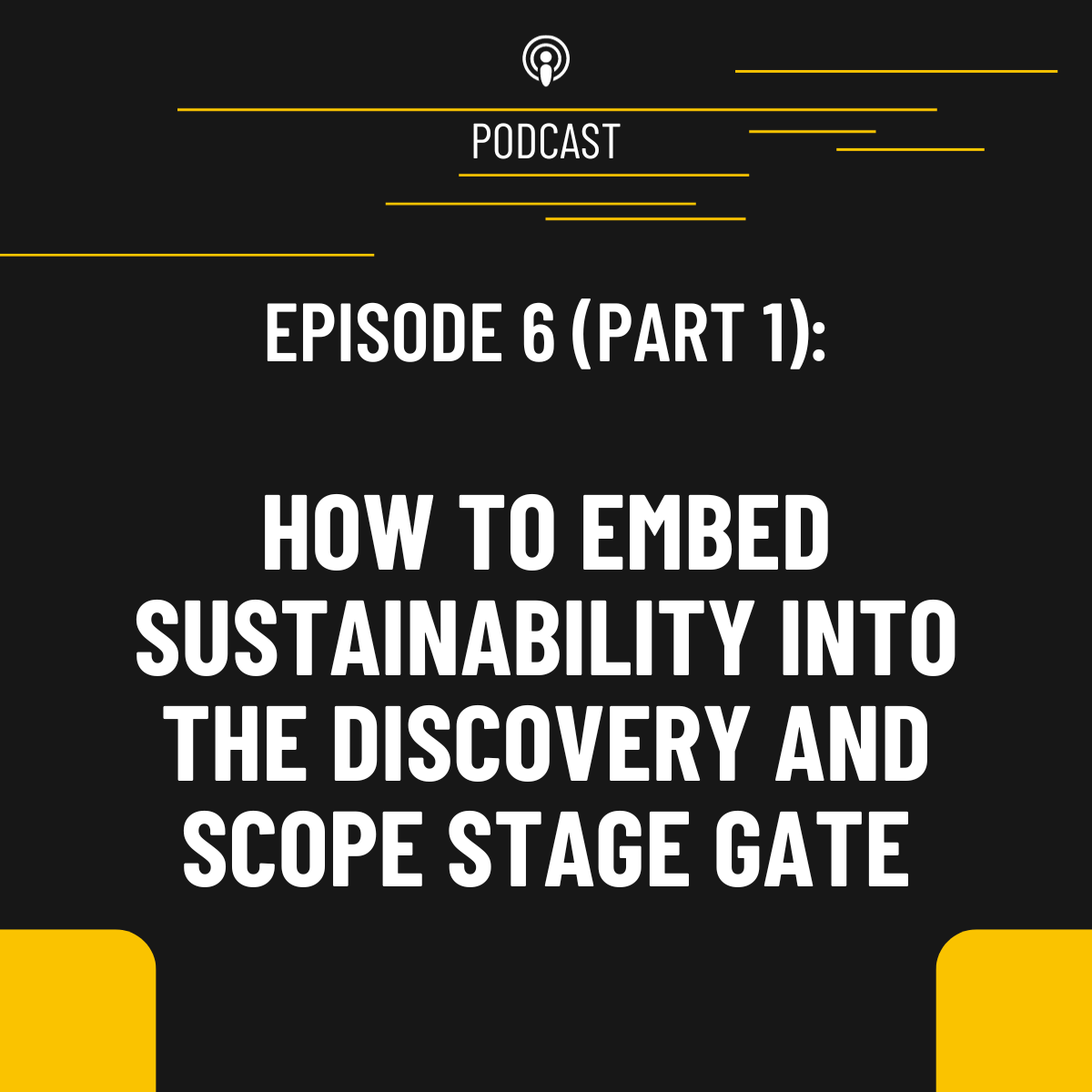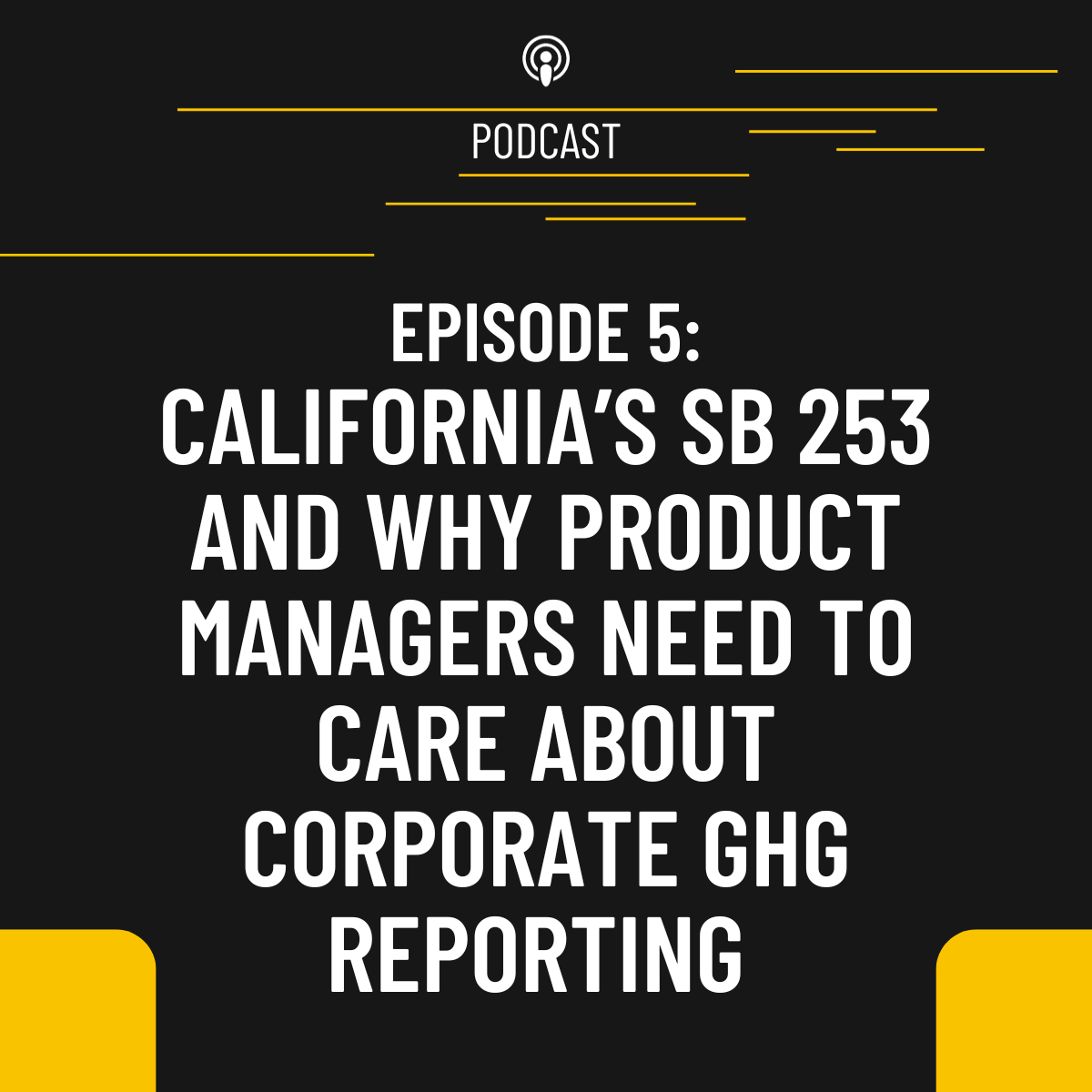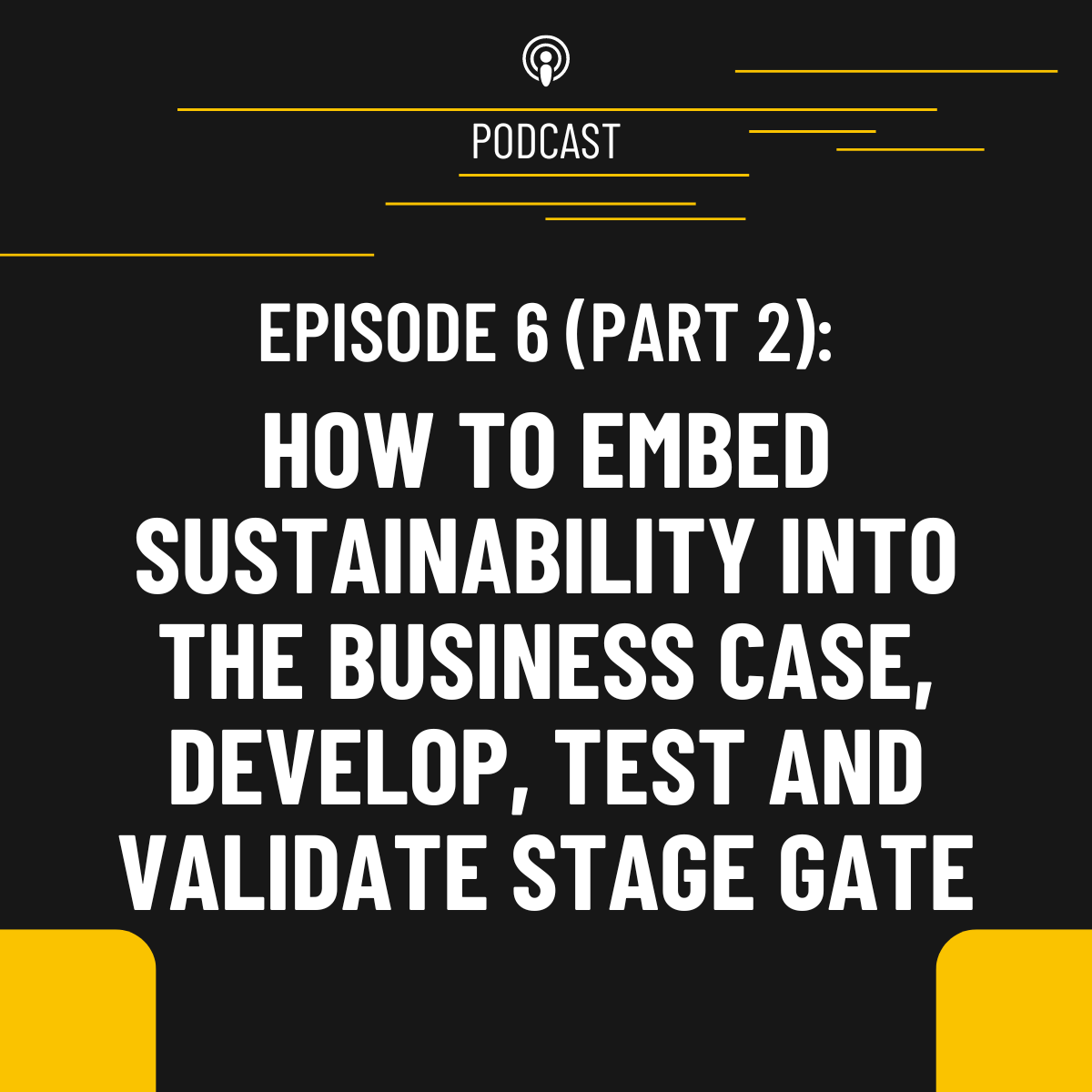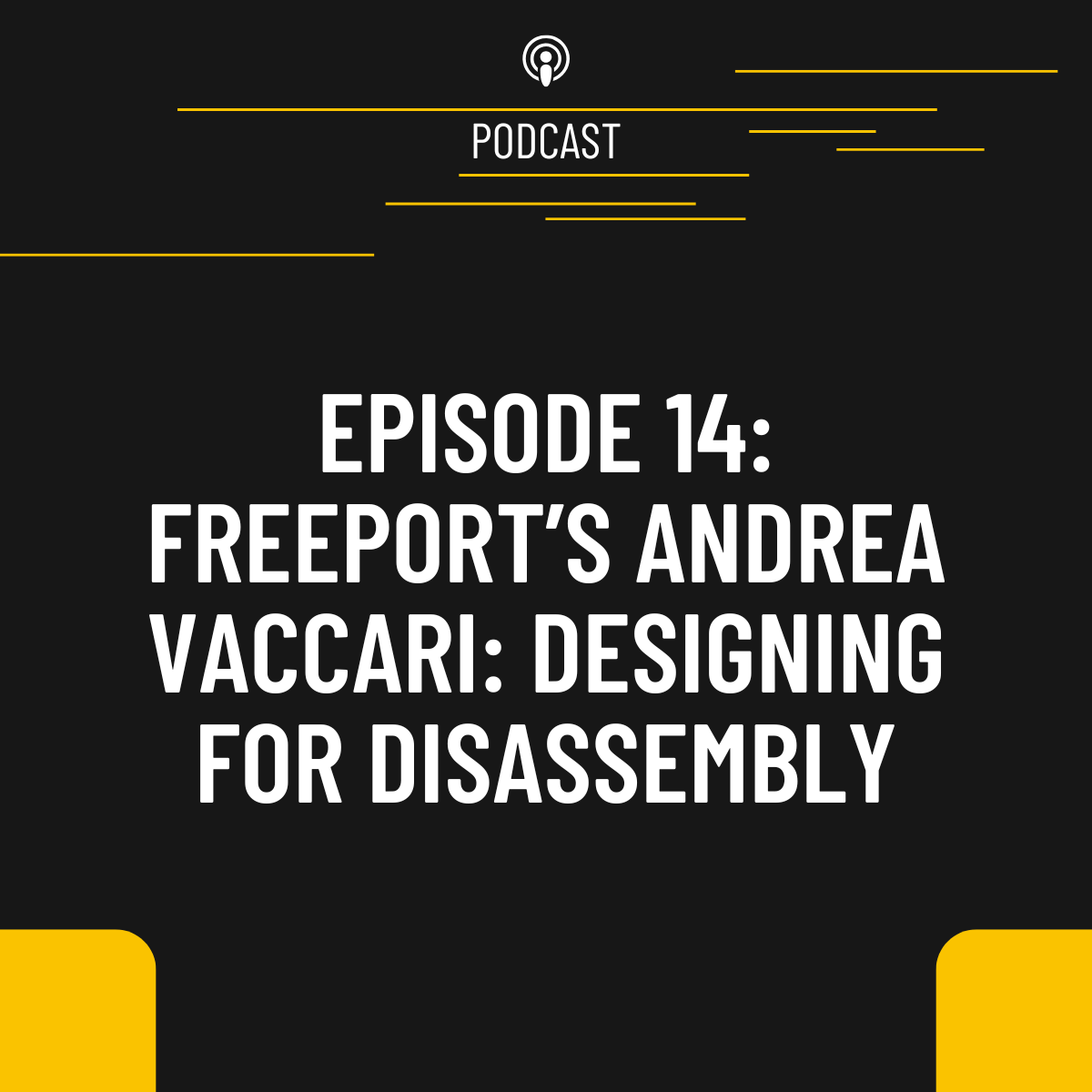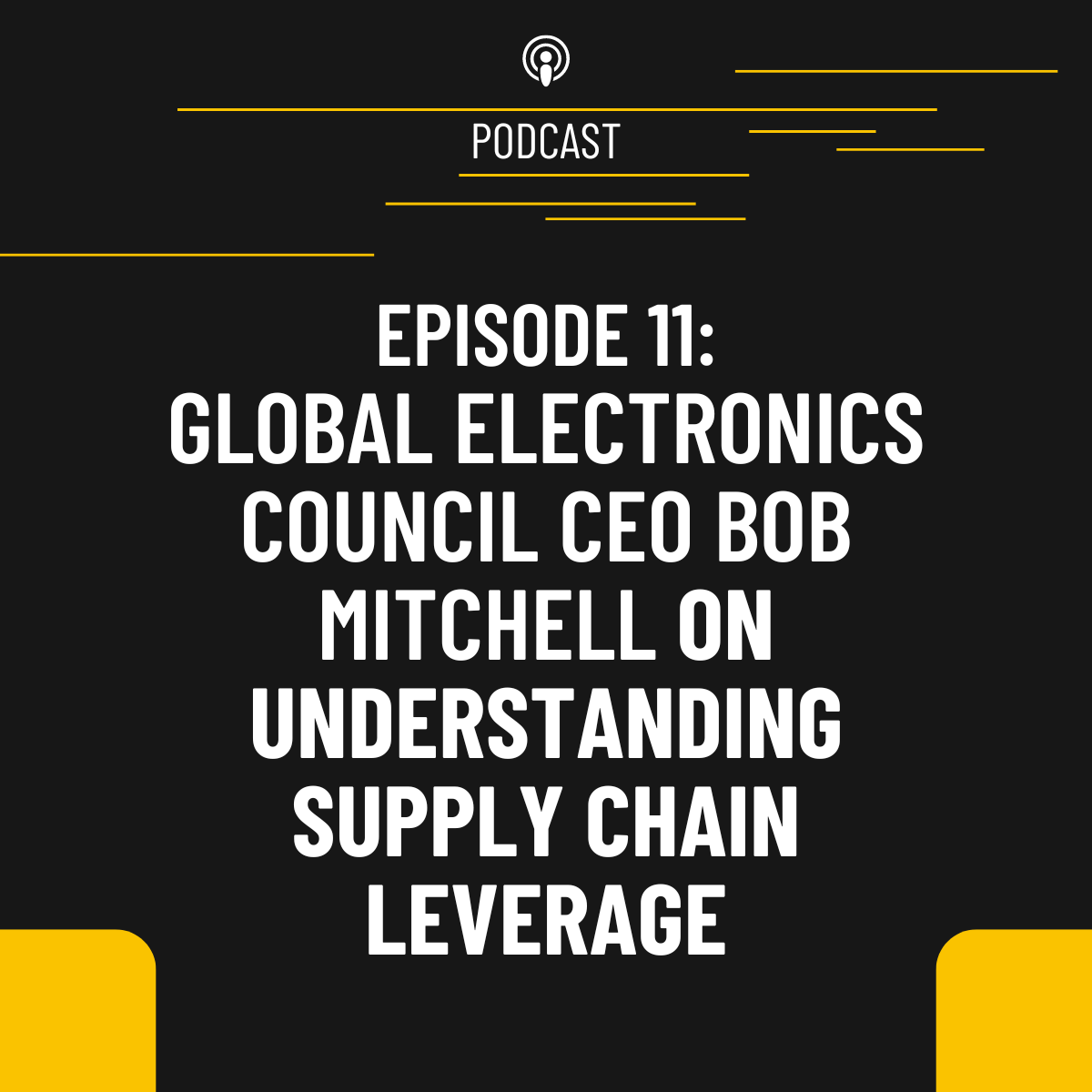Show Notes
You’re at the beginning of product design and need to embed sustainability. But how?
In this episode we answer how to use sustainability as a lens for discovering opportunities in the discovery and scope stages, which are the initial stages in product development. We also cover the importance of being quantitative and how hot spot analysis and life cycle thinking can help.
In this Episode
What is unique or specific about how to embed sustainability at these two stage gates?
- Neil: When experts think of sustainability, what they’re trying to do is understand the implications of different decisions across the entire lifecycle of a product. It manifests in different ways in reporting, communications, and for marketing. [00:44]
- For a product manager you need to pivot slightly differently. It is, what are the decisions across the different stage gates of product development? And how do you use sustainability as a lens to look at those decisions so that you can make better choices.
- You cannot have the same level of complexity considered by a product manager across these stage gates. It’s central to provide information in a way that enables them to make these choices and that's different from what typically happens in the world of experts in the field of sustainability.
- Jim: the biggest difficulty in the sustainability field is being able to translate the outcome or the significance of the impact into a language for the decision makers, and in a timely manner, over their six stages; whether it's greenhouse gas, biodiversity, extraction water, wastewater, etc. [02:23]
- It’s about translating the results for the decision maker because at each stage, they got to pass a series of tests before the next stage. You’ve got to work together and begin to work on that translation.
- In the future, people in the sustainability field, are going to be translators – able to translate the outcome so that the decision makers have the information at the right time to make a decision as they go through the stage gate process.
Shelley - What else should a product managers consider about making tradeoffs or the translation that they need to be making? [04:13]
- Neil: I think the trade offs are happening not in-between stage gates, but within stage gates. And the tradeoffs come second to a different and broader perspective that you're using to make those decisions. [04:30]
- Using batteries as an example, how do people look at the discovery phase? This is the first stage of the stage gate process where you're looking for ideas - what to build? What new product? How to improve an existing product?
- Sustainability has never been a source of these ideas until recently. The idea is to use sustainability just like we use technology, new demographics, regulations, and geopolitics to create new products and new supply chains.
- How does sustainability become another key criteria to instigate an idea? I give an example in batteries. If you look at what happened in the automotive space in the last five years, everybody's racing towards e-mobility. They're trying to transition their powertrains from internal combustion engines to at least hybrids, if not complete electric and alternative fuels like green hydrogen and so on.
- When people are constrained on what they're allowed to do and not do when they're creating products, this creates new ideas.
- There are regulations that are becoming more important as idea generators. The regulations in the US, for example, around the Inflation Reduction Act. It's a big thing in the automotive space right now, where it makes a lot of sense to produce in the US. One of the reasons is geopolitics, but another reason is sustainability.
- Through the lens of sustainability, identify the different opportunities to create new, successful products. This is the first thing that often happens very late in the development process. Before the automotive revolution of green mobility came about, this wasn't something many product managers in the battery space thought about. Now people have built new mines, new supply chains, and looking at changing factories. Knowing what the opportunities are through the lens of sustainability is a key thing to understand and develop ideas around.
- Jim: We've been using the term lifecycle thinking/ hotspot analysis in our podcast. When I think about the hotspot analysis or a simplified lifecycle of an auto battery through the various stages of the battery you can identify the issues. Now you have cobalt, lithium and a variety of other things related to the extraction of the raw materials, and the suppliers who are providing those materials. [08:05]
- Early on in the discovery and the scoping stage, begin a hotspot analysis and identify things. How are the suppliers relating to the environment? How are they treating their workers from a human rights standpoint? There could also be aspects related to the use of chemicals.
- You want to get to the point where you are flagging those hotspots early on and using them. Not from a negative standpoint, but by asking how you can use those hotspots to create innovation and new ideas around how to change your product or redesign your product, so the materials you use are environmentally safe and does not have a supplier that uses child labor. This is a critical stage to get clarity on what those impacts are and then that drives scoping and subsequent stages.
- Neil: Exactly and look a little downstream. The fastest growing automotive segment in Norway is e-cars where they have nearly 100% green electricity. The environmental impact of your car is not just in the production, but it's shifted to the use phase. An electric car in Norway has a different life than an electric car in China, India or the UAE. The kind of battery you design, and the kind of car you design for those areas is very different. This is where opportunities come in. [09:55]
- There's a saying in German, we all cook with cold water. Its key to understand how you will create an added advantage by understanding how this product is going to live over its lifetime. This is an extremely valuable driver for ideas. What can you do differently? Looking at the automotive space and where you're selling this car makes all the difference of whether your car is going to be successful or not. The lifecycle perspective forces you to think of this.
- Jim: In Costa Rica 99% of the electricity is generated from renewable sources. They're beginning to have electric vehicle charging stations around, but the barrier is getting enough charging stations up and normally people buy older cars, which don't fall in that category. So it's going to be a challenge to move towards the electric vehicle because there are some barriers to slow it down. [11:57]
- Neil: I don't think it will slow it down, it's going to be delayed. There are certain economies where people can't and don’t buy new cars. The secondhand market is pretty big. When these e-cars reach their end of first customer life, they'll be sold forward, and this is where there's huge opportunity. [12:37]
- This comes to the second stage gate, which is scoping, where you're developing a hypothesis exactly like this. Should we design cars that have second lives? And there are some manufacturers who don't do this. Should we look at different kinds of powertrains for a different portfolio of cars?
- As a product manager, you’re trying to minimize the number of moving parts to maximize the applications. You don't want to create a new battery for every single kind of car. You want to try and standardize as much as you can. It's not always possible, but the hypothesis is going to be things like, can we get a 1000-kilometer range? Can we get 20 minutes charging? How many years can this car run? This requires lifecycle thinking as we described.
- As a battery manufacturer, the person who's making batteries is not the same as the person who's making the power tool or making the car. You're designing for something where you may not know where this battery is going to end up. And that's where lifecycle thinking helps consider the different scenarios and the hypotheses that you're creating.
Shelley - I like this point that I hear you both alluding to, which sounds like, use sustainability as a lens for identifying opportunities. [14:41]
What is one other point you can highlight to our listeners about what is essential to take away and think about for these stage gates and how to embed sustainability?
- Neil: In these two cases, one of the best tools is to be quantitative. I have an opinion around paper straws. While a paper straw reduces the amount of plastic waste, across every other environmental criterion, whether it's water or total volume of waste or carbon or energy, it's actually the poorer option. Being quantitative about what your hypothesis is and what you want to test is key. [15:05]
- One of the best quantitative tools we have is the lifecycle approach. It's not just giving you the breadth but also the mathematics that allow you to test - is this going to work? Is this the more viable option or not?
- The other aspect of lifecycle thinking, and I'm saying lifecycle thinking, not lifecycle analysis, is costs, compliance, and safety, all require this kind of thinking. Its a very good frame that has come from the sustainability and the LCA community that is available I think is scalable now for product managers to use.
- Jim: The thing I think is critical is to know who the stakeholders are both internally and externally. Initially the focus was about materials, parts and building and selling the product; other people took responsibility further down the product lifecycle. But now product design must deal with what happens when the useful life of the product is over. So, at the beginning you need to identify who will be your partners going forward so there's a company in place to manage the recycling and material recovery. Identifying stakeholders goes hand in hand with the environmental and social impacts that are identified in these early stages. [16:13]
Shelley - Great points to leave our listeners with. Be quantitative; figure out who your stakeholders and partners are; and use sustainability and lifecycle thinking to be the lens for how you discover opportunities. [17:28]
Links to Things We talk about
- Inflation Reduction Act: https://www.whitehouse.gov/cleanenergy/inflation-reduction-act-guidebook/
Who’s talking?
To read about who you are listening to, visit fivelifestofifty.com and click on our bios.
We want to hear from you
Do you have a story about how you are using what you heard?
Is there a question you would like answered?
We want to know! Write to us at [email protected].
